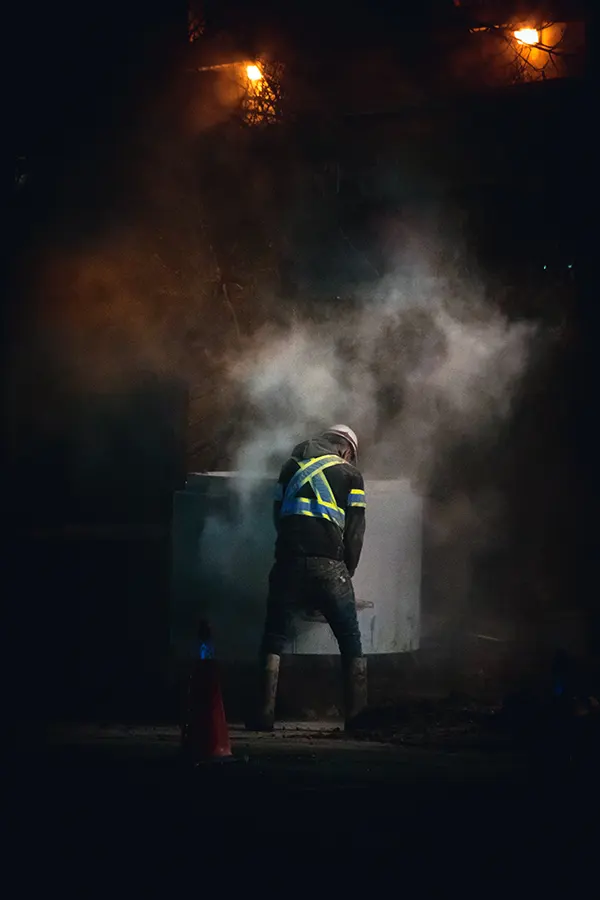Beginning a new house in Crete is difficult enough without knowing which architects, engineers, contractors, specialists, and contractors to choose. Even if you are familiar with the construction process in your home country, it can be difficult to know where to start, the risks that may you face, and the timeline you can expect.
At ARENCOS our main goal is to be a single-source construction solution for a variety of construction projects and clients.

We Will Always Strive to Deliver Solutions with a Sense of Comfort Living, Wellness and Satisfaction

Let there be change!
At ARENCOS we strive to discharge our clients from the burden of bureaucracy and the difficult task of dealing with construction uncertainties, offering an integrated package of services, which includes:
- Project Parameter Analysis
- Architectural Design, Static Analysis, E/M Studies
- Licensing Requirements & Approvals
- Construction Supervision & Management
- Sustainable Design
- Interior & Exterior Design
- Building Services Engineering (MEP)
- Strategic Planning
- Structural Engineering
- Sustainability Design
- Project Delivery Excellence (PDE)
Understanding the Design Build Process
Meeting the Standards That Matter the Most
Few countries offer as many beautiful plots and views as Greece. Crete provides some spectacular opportunities to purchase a plot and then build your own house.
There is a huge selection of land properties available in Chania, Heraklion, Lassithi and Rethymnon, and there is a plot for everyone, regardless of views, surroundings, or budget.
Nowadays, most people building a property in Crete already have a general idea of the style and design they would like.
Nevertheless, how will your ideas and vision for your new home fit the area, the way you will be using the property, and the construction’s compliance with the property law and planning regulations?
These are the matters you will need to discuss with an architect or engineer, to see how your ideas can be implemented and applied to the plot or the renovation project you have chosen.
They will also be able to provide you with a cost estimation of the works required from start to finish and if your design proposals can follow all industry standards.
Effective resource management and the selection of highly skilled professionals are essential to the success of any project.
Understanding the Design Build Process
Step 1: Finding the Right Designer for Your Project
Before making any decisions about who to employ for your new project in Crete, source quotes for the required work from at least three different professionals. This will guarantee you secure a competitive price and it gives you a chance to see how your vision can be better understood – and from whom.
For the next months, you will be working very closely with the engineer or architect of your choice and thus, it is significantly important that you like their way of working, ethical performance and approve of how they communicate and interact.
When deciding on an architectural or engineering firm, ask to see examples of their projects and to speak to past customers. Likewise, it is worth doing a due diligence online before you sign on the final contract.
Key Points
- A good residential property design considers all aspects of the site and construction – orientation, site features, energy performance, floor plan, materials, surfaces, integrated technologies, appliances, and landscape.
- Using a skilled designer is typically well worth the investment. Attention to sustainable design ensures better quality outcomes, and guarantees good energy performance and operational excellence.
- You can use either an architect or a building designer to design your home in Crete. You can choose architectural professionals with their own practice, or a constructor who may have a designer on staff.
- Your chosen designer should synergistically work with you to develop and implement a design that suits your lifestyle, needs and your budget. Make sure the sustainability and energy-saving features that you need are kept in mind throughout the design development.
- Construction works may need planning permission before they begin. The designer should also be able to assist you with the planning permission required to proceed with a proposed development.
Step 1.a: Preliminary Research
The Preliminary research covers several critical parameters such as:
• investigating your future home design and lifestyle
• developing your design brief and specify the non-negotiables
• deciding your budget
• exploring sources of professional advice and hire a professional
• familiarizing yourself with the way of working and interacting with your engineer/architect
• read carefully the sample building contract provided
Step 1.b Legal Checks
Once the land is selected you appoint a lawyer to act on your behalf. They, in turn, appoint an engineer. Between the two they establish six main facts:
- the land titles,
- any financial attachments on the land by the seller,
- the exact size and boundaries,
- any rights of way,
- access to the land, and
- the elevation of the land.
All these factors have a bearing on whether or not the plot qualifies for a building permit. Your lawyer would not allow you buy a land property which did not qualify for a building permit, as this is the main scope of their research.
Understanding the Design Build Process
Step 2: Site Analysis
Visit the site with your designer/engineer to proceed to a ‘SWOT’ analysis (strengths, weaknesses, opportunities and threats of the construction).
This is a very good opportunity to realize if your designer’s vision and your objectives align.
Site analysis includes:
- Site-specific variables
- Orientation
- Access points
- Views
- Overshadowing by trees and buildings (site survey)
- Slope (site survey)
- Noise (site survey)
- Soil type (geotechnical report)
- Geotechnical risks
- Stormwater drainage
- Services (power, phone, water, sewer)
This process can take the form of a paid consultation or can be part of the design contract.
Understanding the Design Build Process
Step 3: Brief Development & Fee Proposal
Brief Development
The development management process for pre-construction can be broken down into five different phases, from an initial concept all the way through to full planning permission.
A development brief is required for the early pre-construction phase of a construction project before the planning permission procedures. The brief development is an outline document which outlines your needs and non-negotiables requirements of your vision.
This brief development among others:
- Verifies that the project is deliverable within budget and within key milestone constraints
- Verifies the objectives and priorities of the project
- The known project risks including how you intend to mitigate
- Outlines client’s preferences for the design including landscaping, sustainable energy requirements and basic infrastructure requirements
- Clarifies how the design will be developed
- Ensures that time and budget parameters are aligned with the client’s vision and needs
- Ensures client’s expectations are realistic and achievable.
- Determines project’s roles and structure
- Determines any spatial requirements – analysis
- Defines sustainability objectives and energy use targets
- Outlines project’s safety and security requirements
- Outlines other performance requirements
Understanding the Design Build Process
Step 4: Final Fee Proposal
Fee Proposal Requirements
A fee proposal is an offer prepared by your designer describing the services proposes to undertake and the fee that will be charged. This may be in the form of a letter or maybe a more detailed document accompanied by an excel sheet.
Depending on the complexity of the project a fee proposal might include:
- A description of the project, including the project schedule and estimated costs.
- A schedule of services to be provided during the entire life-cycle of a project. This may include a description of services that are not included within the proposal (for example, making an outline planning application), and limits to certain activities (for example the number of meetings, progress reports, or site visits).
- Details and roles of key personnel to be allocated to the project.
- Identification and proposals of any additional consultation needs.
- The form of agreement and conditions of engagement that will be used.
- Health Insurance
- The hardware and software that will be used include the number of renderings.
- Clarification of chargeable and non-chargeable expenses.
- Hourly rates are to be applied to any work outside the proposed scope of services.
This process can take the form of a paid consultation or can be part of the design contract.

Understanding the Design Build Process
Step 5: Building Contract
Whether you want to proceed with a new construction project in Crete or to remodel an existing structure, it is critically important that you choose the right type of contract to meet your requirements and that you make sure the contract terms are reasonable to you.
The most common types of contracts that are used for construction projects in Crete, Greece include:
Lump-sum or fixed-price contracts
Lump-sum contracts involve the owner agreeing to pay a fixed price and the contractor or builder agreeing to complete the project for that fixed price.
Cost-plus contracts.
Cost-plus contracts involve the owner paying the actual costs of construction and purchases plus an additional set percentage or amount for the contractor or builder. The risk here is high for the owner because if the project becomes more expensive, the owner is responsible to pay for the additional construction costs.
Time and materials contracts.
A time and materials contract means the owner pays for the time spent by the contractor/builder and must pay for the construction materials costs.
Unit Price Contracts.
Unit price contracts divide the works-tasks required to complete a project into separate and independent parts. The contractor provides the owner with price estimates for each unit of work, rather than an estimate for the project as a whole.

Step 5.a: Private Agreement
A simple Building Contract or ‘Private Agreement’ document will identify the following basic elements:
Employer: The party hiring the contractor to complete construction on his or her property.
Supervisor: The party responsible for the day-to-day oversight of the construction.
Roles: The role and responsibilities of the contractor/Architect/Engineer.
Insurance: Employers and contractors are both responsible for obtaining insurance to protect against damages and defects, and claims and losses.
National Insurance contributions (I.K.A.)
License number: The general contractor’s state license board number, proving they are a licensed contractor/ engineering architectural firm.
Worksite: The exact address of the property where the construction is to be completed.
Description of work: A detailed description of the work and construction to be done.
Contract price and payments: The total price to be paid for the works agreed and how and when payments will be made.
Contract documents: Any drawings or other documents that will be part of the contract.
Reports: The form, type and time-frequency of reports about the progress of the work (Documentation, videos, images, presentation, etc)
Dispute resolution: Arbitration, mediation, and adjudication are common ways for parties to settle disputes under the contract instead of going through the courts.
Termination: When the buyer or contractor can terminate the contract.
Inspection: This allows the owner to examine the work done by the contractor at any time during construction to see if it conforms with the contract terms.
Materials and equipment: Which party will supply and pay for the cost of materials and equipment.
Starting and completion dates: The start and end date of the construction.
Licensing and permits: Which party will be responsible for obtaining any required licenses and permits (Archaeology, Forestry, Urban Planning Authority, PPC, etc).
Subcontracts: Whether the contractor will hire engineers and experts to help perform dedicated studies or works (geotechnical studies, structural static testing)
Work changes: How any changes to the agreed-upon work will be handled once construction has begun.
Warranties: How long will the contractor warrant that his or her work is free from material defects.
Insurance: Owners and contractors are both responsible for obtaining insurance to protect against damages and defects, and claims and losses.
Understanding the Design Build Process
Step 1: Finding the Right Designer for Your Project
Before making any decisions about who to employ for your new project in Crete, source quotes for the required work from at least three different professionals. This will guarantee you secure a competitive price and it gives you a chance to see how your vision can be better understood – and from whom.
For the next months, you will be working very closely with the engineer or architect of your choice and thus, it is significantly important that you like their way of working, ethical performance and approve of how they communicate and interact.
When deciding on an architectural or engineering firm, ask to see examples of their projects and to speak to past customers. Likewise, it is worth doing a due diligence online before you sign on the final contract.
Step 5.b: Health & Safety
Recent research studies have reported that there are significant problems in Greece with regard to the implementation of health and safety legislation at work.
It is reported that many managers and workers and managers are unaware of the relevant legislation, which in many cases is outdated and excessively complex.
Moreover, risk prevention measures and safety and health practices are being ignored, while levels of monitoring are also inadequate.
You can learn more about the Greek Building Law here.
Article 662 of the Greek Civil Code, in summary, sets out a general principle which obliges employers to regulate issues relevant to work so as to protect the life and health of employees.
Law 3850/2010, largely based on a series of EU Directives, sets out a range of employers’ and employees’ obligations for the protection of health and safety.
Step 5.c: Construction Supervision
Any construction project is accompanied by constant monitoring and supervision of the workflows and development process steps. Potential defects should be detected in time to reduce construction risks and project delays.
A complete construction supervision service include:
- Design supervision
- Construction materials quality checks
- Site supervision in accordance with technical and construction legal requirements
- Continuous supervision of construction works (quality, schedule, and budget)
- Commissioning supervision on quality and schedule
- Supervision of materials installation, systems and infrastructure
- Assessment consultation
- As-built documentation
- Building Information Modeling services (BIM)
At ARENCOS we are using an integrated approach of monitoring, supervising and reporting to identify project defects, mitigate risks and prevent budget overruns.
Our methodologies involve materials quality inspection, on-site safety, industrial and Greek Civil Law compliance, and deadlines monitoring. This guarantees effective and expeditious project progress yet, efficient cost control for your investment.
Understanding the Design Build Process
Step 6: Project Completion
The completion phase is when the contractor (or the project manager) has to finalize many things including stopping the temporary supplies, removing coverings & protective wrappings, and performing a rough cleaning – removal of large objects, debris, trash, and disposables.
This stage is complete after approval of the electrical, plumbing, and piping infrastructure.
In general, the following works are required prior to delivery:
- The whole property should be thoroughly cleaned out
- All windows polished and all labels removed from glass and appliances
- All packing to be removed from cookers and gas equipment
- Site toilet and any remaining plant on hire to be off-hired
- Central heating switched to ‘run’
- Telephone company to connect
- Contractors to install TV or satellite dishes
- Energy Performance Certificate to be prepared
- Issuing a Building Final Inspection document
- Warranty inspector’s final inspection and issuing of warranty
- Arrange protective covering for floor surfaces prior to delivery of furniture and appliances
- Deliver all keys, tagged and labeled
ENFIA – UNIFIED PROPERTY TAX
From 2014 onwards and according to Law 4223/2013, the Uniform Tax on the Ownership of Real Estate Property (ENFIA) is imposed on all real estate properties that are in Greece.
Under Article 1 of the aforementioned Law (as amended by Law 4509/2017) it is specified that any natural or legal person or legal entity that owns real estate property (either leased or not), is subject to the said tax and on to the following rights in rem:
• Full ownership
• Bare ownership
• Usufruct possession
• Dwelling
• Surface of the real estate property
The above property tax – E.N.F.I.A. is also imposed on the following rights in rem or rights under contract law:
• Exclusive use
• Parking place
• Supplementary (Auxiliary) places
• Swimming pool
It is noted that the full owner is obliged to pay the total EN.F.I.A., which is charged on the real estate property, in proportion to the percentage of his co-ownership and irrespectively of any amendments that may occur during that year and regardless of the transfer of the title.
Total Architecture and
Engineering Excellence
DISCLAIMER
This is a personal opinion article from ARENCOS – not a peer-reviewed journal or a sponsored publication. We make no representations as to the accuracy, completeness, correctness, suitability, or validity of any information on this article and will not be liable for any errors, omissions, or delays in this information or any losses injuries, or damages arising from its display or use.
All information is provided on an as-is basis. It is the reader’s responsibility to verify his or her own facts. The views and opinions expressed on this page are those of the authors and do not necessarily reflect the official policy or position of any other agency, organization, employer, or company.
Assumptions made in the analysis are not reflective of the position of any entity other than the author(s) – and, since we are critically-thinking human beings, these views are always subject to change, revision, and rethinking at any time. Please do not hold us to them in perpetuity.
The authors and the webpage of ARENCOS are not to be held responsible for the misuse, reuse, recycled, and cited and/or uncited copies of content within this page by others.

